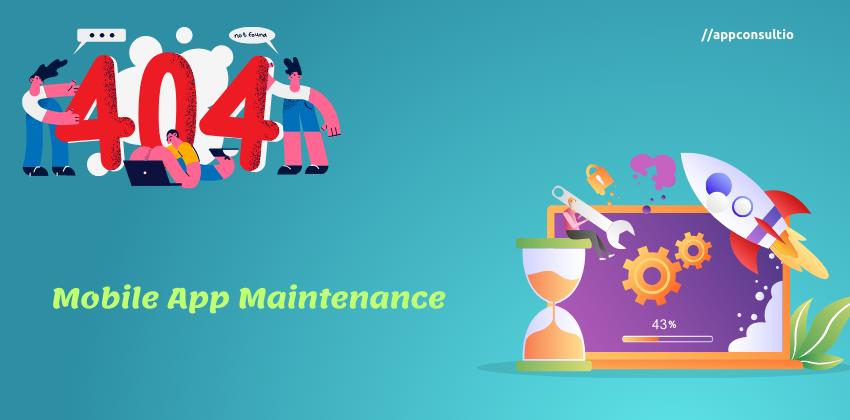
Mobile app maintenance refers to the ongoing process of ensuring that a mobile application remains relevant and fully functional after its initial development and release. It involves regular updates to fix bugs, improve performance, and adapt to evolving user needs and operating system changes. Maintenance also includes monitoring user feedback, analyzing app analytics, and implementing new features or enhancements to keep users engaged and satisfied. Proper maintenance is crucial for retaining a loyal user base and staying competitive in the ever-changing app market. It requires a dedicated team and a strategic approach to continuously improve the app's quality and user experience.
Software Maintenance - Software maintenance is like taking care of a computer program from the time it's made until it's no longer needed. It involves making changes to the program after it's given to users. These changes can fix problems, make it work better, or adapt it to new situations.
Think of it as maintaining a car - you fix it when it has issues, improve it to run smoother, and adjust it for different road conditions. While it's important for software, it can also be expensive and time-consuming. In fact, these changes can cost a lot, sometimes even more than creating the software itself. But it's necessary to keep the software useful and up-to-date.
There are four types of software maintenance practices-
Corrective Maintenance: Fixing mistakes in software that were discovered after it was already given to users. It's like patching up holes in a leaky boat.
Adaptive Maintenance: Making software work well in a new situation or environment. It's like modifying a toy to play outdoors when it was initially designed for indoor use.
Perfective Maintenance: Improving software by making it faster and adding new features, like adding more colours and details to a drawing to make it more appealing.
Preventive Maintenance: Making changes to the software to prevent future problems or crashes, similar to getting regular check-ups for your car to prevent breakdowns.
Maintenance requirements are like a set of rules that explain how to update the software after it's released. They cover all these maintenance types and any new features that should be added, keeping the software in good shape and making it better over time.
Mobile Application Maintenance -
In today's super competitive mobile app market, there are tons of new apps popping up every day, many of which are trying to do the same things and attract the same users. So, the apps that stay ahead and get noticed by more people are the ones that keep offering high-quality stuff and cool new features regularly.
To make software better, we can use methods or ways that either make the actual product (the app) better or make the process of building the app better. It's like constantly upgrading your bike to ride faster or finding better ways to build bikes.
In the competitive world of mobile apps, keeping your app high-quality and working smoothly is crucial. To do this, improving how you maintain the app is really important. Think of it like taking good care of a valuable possession.
One way to do this is by having a maintenance schedule. This is like a plan that helps you regularly check and update your app. It's essential to keep up with the fast-changing market.
Adding new features to your app is also super important. These are like cool and unexpected surprises for users, such as new characters or game themes. It's like adding extra toppings to an ice cream sundae – it makes people really happy.
By doing this, you make your users even more satisfied. So, having a schedule to add new features and continuously improve your app is a must, and it should be well thought out.
Maintenance Models -
Maintenance models in mobile maintenance are structured approaches for managing and organizing the ongoing care of mobile applications. They help developers and teams handle tasks like fixing bugs, adding new features, and improving performance systematically. Common models include corrective, adaptive, perfective, and preventive maintenance, each focusing on specific aspects of app upkeep and enhancement.
We deduce the following three mobile application maintenance models -
Emergency-oriented Maintenance: This is like fixing a major problem with the app as soon as it pops up, just like changing a flat tire on a car when it goes flat unexpectedly.
Feature-oriented Maintenance: It's about regularly adding cool new stuff to the app to make it more interesting and enjoyable for users, similar to adding new toppings to an ice cream sundae.
Constant Maintenance: Think of it as taking care of a garden, where you always need to keep it tidy and healthy. With apps, it means continuously ensuring the app works well, stays up-to-date, and fixes any problems.
Conclusion - In conclusion, mobile app maintenance is the ongoing process of ensuring apps remain functional, relevant, and user-friendly. It involves periodic updates, bug fixes, and adapting to evolving user needs. Four primary maintenance practices include corrective, adaptive, perfective, and preventive maintenance. Additionally, there are three maintenance models: emergency-oriented, feature-oriented, and constant maintenance, each addressing specific aspects of app care. In the competitive app market, maintaining high quality and adding new features through strategic planning is essential for long-term success.